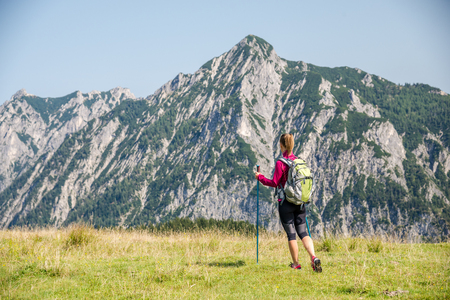Understanding British Maps and Grid References
If you plan to hike solo in the British countryside, one of the most essential skills is mastering the use of Ordnance Survey (OS) maps. These detailed topographical maps are a staple for UK walkers, offering unparalleled detail of footpaths, terrain features, and landmarks. The first step is familiarising yourself with the map’s scale—most hikers prefer the 1:25,000 Explorer series or the 1:50,000 Landranger series. Each symbol on an OS map has a specific meaning, from different types of rights of way to features such as trig points, stone walls, and even phone boxes. A clear understanding of these symbols ensures you can identify your position and plan your route accurately.
Grid references are another fundamental aspect of navigation in Britain. The national grid divides the country into square grids, allowing you to pinpoint any location with precision. Grid references come in two main types: four-figure (for general areas) and six-figure (for exact locations). For instance, a six-figure reference like SK123456 will lead you to a specific point within a 100-metre square. Learning how to read and use these references gives you a reliable method for communicating your location in emergencies or when checking in with others.
Building confidence in reading OS maps and using grid references provides a crucial foundation for all other navigation skills. As British landscapes can shift rapidly from moorland to woodland, or from coastal paths to rolling hills, this competence ensures you remain oriented and safe throughout your journey.
2. Using a Compass with Confidence
Navigating the British countryside solo requires not only map-reading skills but also a practical understanding of how to use a compass effectively, especially on meandering public footpaths and bridleways where landmarks can quickly become ambiguous. Mastery of this tool is essential for maintaining your bearings and ensuring you remain on course, particularly in low-visibility conditions or when paths split unexpectedly.
Key Steps to Compass Navigation
Start by familiarising yourself with the basic components of an orienteering compass: the baseplate, rotating bezel, magnetic needle, and orienting lines. The following table outlines the core steps involved in compass navigation for British hikers:
| Step | Description |
|---|---|
| 1. Set Your Map | Lay your OS map flat and align it with north using your compass. Ensure features on the map match those in your surroundings. |
| 2. Identify Your Route | Select your next waypoint along the public footpath or bridleway. Mark it clearly on your map. |
| 3. Take a Bearing | Place the edge of the compass along your intended route. Rotate the bezel so that its orienting lines match the grid north lines on the map. |
| 4. Adjust for Magnetic Variation | Check if local magnetic variation needs to be accounted for—this is usually minor in the UK but worth noting from your map legend. |
| 5. Follow Your Bearing | Hold the compass flat and turn yourself until the magnetic needle aligns with orienting arrow. Walk in this direction, using identifiable features as checkpoints. |
Navigational Tips Specific to Britain
- Public footpaths often twist through hedgerows or cross multiple fields—regularly confirm your position against field boundaries or stiles shown on OS maps.
- If you encounter a fork in the path, use your compass bearing rather than visual cues alone, as signage can sometimes be missing or misleading.
- Keep an eye out for ‘kissing gates’, bridges, or other unique British waymarks indicated on detailed maps; these serve as reliable progress markers when navigating solo.
Troubleshooting Common Issues
- If you suspect you have drifted off your intended path, stop and take a new bearing from your current location to a known point (such as a church spire or hilltop) visible both on the ground and map.
- Avoid using metal objects or mobile phones near your compass, as these can cause interference and false readings—a common pitfall when navigating near farm equipment or parked vehicles.
Final Thought
Developing confidence with a compass is a process of consistent practice; each solo walk across moors, dales, or woodlands will build both skill and trust in your navigational judgement. In the unpredictable British weather, these abilities are not just useful—they are essential for safety and peace of mind.
![]()
3. Interpreting Countryside Features and Rights of Way
Navigating the British countryside demands more than just following a map; it requires an understanding of the unique features and legalities that shape rural landscapes. Recognising key land features is essential—hedgerows, drystone walls, and streams are common boundaries that define fields and public paths. Equally important is the ability to interpret signage: look out for fingerposts, waymark discs, and coloured arrows which indicate public footpaths (yellow), bridleways (blue), restricted byways (purple), and byways open to all traffic (red). These markers are not just guidance—they affirm your legal right to be on these routes.
Kissing Gates and Stiles
On your solo hikes, you’ll frequently encounter kissing gates and stiles. Kissing gates are designed to allow people through while keeping livestock secure; their distinctive swinging mechanism is a familiar sight across Britain. Stiles, whether step, ladder, or stone slab varieties, serve a similar purpose. Knowing how to use these respectfully—closing gates behind you and leaving no trace—ensures good relations with landowners and maintains access for all walkers.
Understanding Legal Access Rights
The UK’s countryside is criss-crossed with an extensive network of public rights of way. These legally protected paths allow walkers access through private land without trespassing. However, not all tracks are equal: public footpaths permit walking only, while bridleways also allow cyclists and horse riders. Permissive paths are another category—these are routes where landowners grant permission for public use but may withdraw access at any time. Respecting closures and diversions is crucial both legally and for the preservation of future access.
Practical Tips for Navigating Rights of Way
Always carry an up-to-date Ordnance Survey map or a reliable digital mapping app. Before setting off, check local council websites or countryside access portals for updates on path closures or new permissions. When in doubt about your route or rights, look for official signage or consult locals who are often knowledgeable about the area’s paths and customs. By understanding these navigation essentials, you’ll build confidence to explore responsibly and safely throughout Britain’s stunning rural landscapes.
4. Navigating in Poor Weather and Limited Visibility
Britain’s countryside is renowned for its rapidly changing weather conditions—one moment you’re basking in sunshine, the next you’re enveloped by dense fog or lashed by heavy rain. For solo hikers, these unpredictable shifts can pose significant navigation challenges, especially when visibility drops and familiar landmarks vanish into the mist. Here are practical strategies to help you maintain your bearings and stay on course when faced with adverse weather.
Staying Oriented in Fog and Rain
Preparation is essential before setting out. Always check the Met Office forecast, but remember that conditions can change swiftly, especially in upland areas like the Lake District, Dartmoor, or the Scottish Highlands. When visibility deteriorates:
- Use a compass and map together: Rely less on visual cues and more on your compass bearings. Plot your intended route on an OS map (Ordnance Survey) and take regular compass readings to stay aligned.
- Pace counting: In poor visibility, it’s easy to veer off path. Count your steps between waypoints—knowing how many paces you cover per 100 metres can help gauge distance travelled.
- Identify handrails: Use linear features such as stone walls, fences, streams, or hedgerows as ‘handrails’ to guide your progress even when you can’t see distant features.
- Back bearings: Regularly take back bearings to ensure you can retrace your steps if needed.
Practical Tools for Low-Visibility Navigation
| Tool/Technique | Description | When to Use |
|---|---|---|
| Compass Bearings | Follow a set direction using your compass from one point to another. | Essential when paths are obscured or in featureless terrain. |
| Pacing & Timing | Measure distance by counting steps or using a stopwatch. | Useful for crossing moorland or open fields with no visible markers. |
| Aiming Off | Intentionally aim slightly to one side of a target feature (like a stream crossing) so you know which direction to turn upon arrival. | Helpful when hitting exact points is difficult due to poor visibility. |
| Attack Points | Navigating towards a large, easily identifiable feature close to your actual destination, then making a final approach from there. | Effective in dense fog or heavy rain when smaller features are invisible. |
Sensible Safety Measures
If weather conditions worsen unexpectedly, don’t hesitate to pause and reassess. Find shelter if possible—behind a dry-stone wall or among trees—and review your position on the map. If unsure of your location, use identifiable ‘catching features’ such as valleys or roads that will prevent you from straying too far off route. In extreme cases, consider turning back rather than risking further disorientation—a cautious approach is always respected among seasoned British walkers.
Final Thoughts on Navigating Britain’s Elements
Navigating solo through Britain’s countryside requires respect for both the landscape and its fickle weather patterns. Mastering these techniques will not only boost your confidence but also ensure you return safely from every adventure—no matter how thick the fog or how heavy the rain.
5. Staying Safe and Making Smart Decisions
Solo hiking in the British countryside is immensely rewarding, but it does require a proactive approach to safety. Before setting off, spend time thoroughly planning your route—consider not just distance and elevation, but also the remoteness of the paths and their condition. Always let someone know your planned route and estimated return time; this is especially crucial in areas like the Lake District or the Scottish Highlands, where mobile reception can be patchy at best.
Route Planning for Solo Hikes
When mapping out your journey, use reliable Ordnance Survey maps and cross-check with recent local updates online or from visitor centres. Take note of key waypoints such as villages, landmarks, and bothies that could offer shelter if needed. If you’re venturing onto less-trodden trails, consider plotting alternative exit routes should weather or fatigue become an issue.
Preparing Local Emergency Contacts
Carry a charged mobile phone and save local emergency numbers before leaving home. In the UK, dialling 999 or 112 will connect you to emergency services; specifying “Mountain Rescue” is vital if you need specialist help in rural or upland terrain. Note the postcodes or grid references of car parks, pubs, or ranger stations along your route—these are invaluable if you need to direct help your way.
If You Become Disoriented
If you realise you’ve lost your bearings, stop and take stock rather than pushing on blindly. Check your map and compass calmly; try retracing your steps to the last known point on your route. If visibility drops suddenly due to mist (which happens often in places like Dartmoor), stay put until conditions improve. If you’re unable to regain the path and it’s getting late or you’re injured, don’t hesitate to call for help—UK rescue teams are experienced and would much rather be contacted early than after dark.
Essential Safety Reminders
- Pace yourself and listen to your body—fatigue leads to poor decisions.
- Dress appropriately for changeable British weather; always pack a waterproof layer.
- Trust your instincts: if something doesn’t feel right with the route or conditions, turn back.
By combining thoughtful preparation with practical navigation skills, solo hikers can confidently explore Britain’s wildest corners while staying safe and making sound decisions when it matters most.
6. Mobile Technology and Traditional Skills
In the British countryside, navigation has evolved beyond paper maps and compasses, thanks to the widespread availability of mobile technology. However, a balanced approach is crucial for solo hikers. GPS devices, hiking apps, and smartphones can be invaluable tools—they provide real-time location data, route tracking, and emergency communication. Popular apps like OS Maps and ViewRanger offer detailed Ordnance Survey mapping, giving you instant access to footpaths and terrain information. Yet, it is important not to rely solely on technology.
The Benefits of Modern Devices
Mobile phones are excellent for checking your position quickly or sharing your location with someone at home. Many apps now allow users to download offline maps, which is especially useful in remote areas with poor reception. GPS accuracy can help you reorient yourself if you become disoriented in foggy moorlands or dense woodland—scenarios common in the UK.
The Pitfalls of Over-Reliance
Batteries can fail, screens can crack, and signal can disappear without warning—especially in more isolated regions like the Lake District or Scottish Highlands. Weather can also affect electronic devices: rain and cold sap battery life fast. That’s why it’s essential to always carry a physical map (ideally an Ordnance Survey map) and a reliable compass as backup.
Integrating Both Approaches
The most effective navigators blend traditional skills with modern aids. Practise reading contour lines and orienting yourself with a compass before your hike. Use your phone or GPS for quick checks, but confirm your route using established landmarks and features on your map. This hybrid method builds confidence while ensuring that you are prepared for any eventuality—a vital skill when walking solo in the unpredictable British outdoors.
Ultimately, mastering both mobile technology and traditional navigation means you’ll enjoy greater flexibility and safety during your adventures. By embracing this balanced approach, you make the most of all available resources, equipping yourself to tackle the varied landscapes of Britain with assurance.


